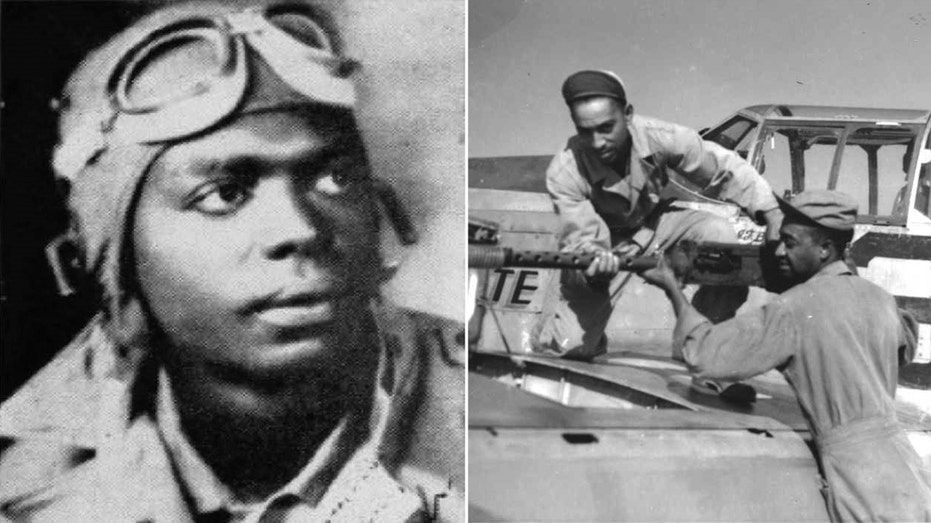On Memorial Day, Americans honor those who sacrificed their lives for our country. Many of the families of those who went missing in action have not had the full opportunity to say goodbye to their loved ones. The Defense Prisoner of War/Missing in Action Accounting Agency is working to change that.
“It really is a fulfillment of a promise made to service members who we send off to combat and did not come home,” said Kelly McKeague, the agency’s director.
AMERICAN WORLD WAR II HEROES ADOPTED IN ‘FACES OF MARGRATEN’ PROJECT BY ‘GRATEFUL’ DUTCH PEOPLE
More than 2.2 million airmen served in World War II, according to the National Museum of the U.S. Air Force. Of those, 355 were Tuskegee Airmen who served overseas.
“It’s a storied unit, segregated unit that just did heroic things in World War II,” McKeague said.
2nd Lt. Fred Brewer was one of 27 Tuskegee Airmen who previously was thought to be missing in action. The 23-year-old was the second from the unit to be identified by the Defense POW/MIA Accounting Agency.
In October 1944, Brewer had departed from Ramitelli air base in Italy alongside 57 other fighters assigned to escort bombers to Regensburg, Germany. Brewer had attempted to climb above thick cloud cover when his engine stalled. He was thought to have crashed near Moggio Udinese, Italy. The story of what happened after the crash wouldn’t begin to come together until more than 70 years later.
“It happened almost serendipitously. It happened because an Italian villager took remnants of his plane back in the 1940s, built a memorial that one of our historians correlated to a set of remains that was moved from a German cemetery to an Italian cemetery, eventually to an American cemetery, where we disinterred the unknown remains of Lt. Brewer,” McKeague said.
In December, Brewer was given a proper burial and laid to rest in his hometown of Charlotte, North Carolina.
“These are cases that weren’t able to be resolved after the wars. And so here we are with our historians, our scientists, searching, finding and then hopefully identifying,” McKeague said.
The Moggese Historical Photographic Archive in Italy says a ceremony will be held for Brewer in October, near the Italian town where he died.
“It’s our ability to use historical references and research scientific technologies to hopefully put a name and a face to a set of remains and return them to their family,” McKeague said.
Last Memorial Day, a funeral was held for Korean Medal of Honor recipient Army Cpl. Luther Story after the agency identified his remains. In late 1950, at just 19 years old, Story gave his life defending against enemy soldiers so that his comrades could escape.
“During the withdrawal the company was attacked by such superior numbers that it was forced to deploy in a rice field,” Story’s Medal of Honor inscription reads. “Realizing that his wounds would hamper his comrades, he refused to retire to the next position but remained to cover the company’s withdrawal. When last seen he was firing every weapon available and fighting off another hostile assault.”
Story was just 16 years old when he enlisted in the Army; he convinced his mother to forge his paperwork.
“At 19, he does that valor, that heroic action, thereby allowing his unit to escape to safety,” McKeague said.
Story was born in Georgia to sharecroppers who worked at various farms in the middle part of the state. One of the farms they worked at belonged to former President Carter’s father.
AMERICAN WORLD WAR II HEROES ADOPTED IN ‘FACES OF MARGRATEN’ PROJECT BY ‘GRATEFUL’ DUTCH PEOPLE
Carter had started hospice care when Story was identified in April 2023 and was told Story would be returning to the U.S.
“When he was told that Luther Story was coming home. He just got the biggest smile and said, ‘I remember that young man,’” McKeague said.
Active wars make it difficult to immediately identify those killed in action. As conflicts wind down, investigators must work through environmental factors and foreign governments.
“Vietnam, Laos and Cambodia are very challenging. The acidic soil degrades remains, almost destroys them, and oftentimes our teams are only finding teeth,” McKeague said.
AMERICAN WORLD WAR II HEROES ADOPTED IN ‘FACES OF MARGRATEN’ PROJECT BY ‘GRATEFUL’ DUTCH PEOPLE
Air Force Col. Ernest De Soto, 37, flew an F-4D Phantom II during the Vietnam War.
“He was born from San Francisco. He was a phenomenal athlete, had a partial scholarship to Stanford. His parents could not afford Stanford, so he enlisted in the Air Force,” McKeague said. “[He] qualifies to go to pilot training, becomes a fighter pilot, finds himself in Vietnam.”
He was last seen in 1969. His plane went missing as he was returning from a canceled strike mission near Quang Nam Province. The lead aircraft in his unit noticed De Soto was not in sight and immediately began an aerial search without success. Teams were unable to search the ground because of the ongoing fighting.
In 1995, a Joint Field Activity team located the crash site in the Giang District. Investigations at the site continued until 2020. After a recovery mission and further DNA testing, De Soto was finally accounted for in March 2023.
“In the case of Col. De Soto, we just had to keep sending teams back to either investigate the site, excavate the site,” McKeague said. “Especially with these aircraft losses oftentimes coming off of radar, no one knows the last known location. And so really it’s almost rolling the dice in some cases.”
There are still 72,000 soldiers missing from World War II, 7,500 from Korea and 1,500 from Vietnam. Of those 81,000, the Defense POW/MIA Accounting Agency believes 38,000 will be recoverable.
“Every single one has a unique story to it,” McKeague said. “Whether it’s Lt. Brewer, whether it’s Cpl. Story, or in the case of Col. De Soto.”
























